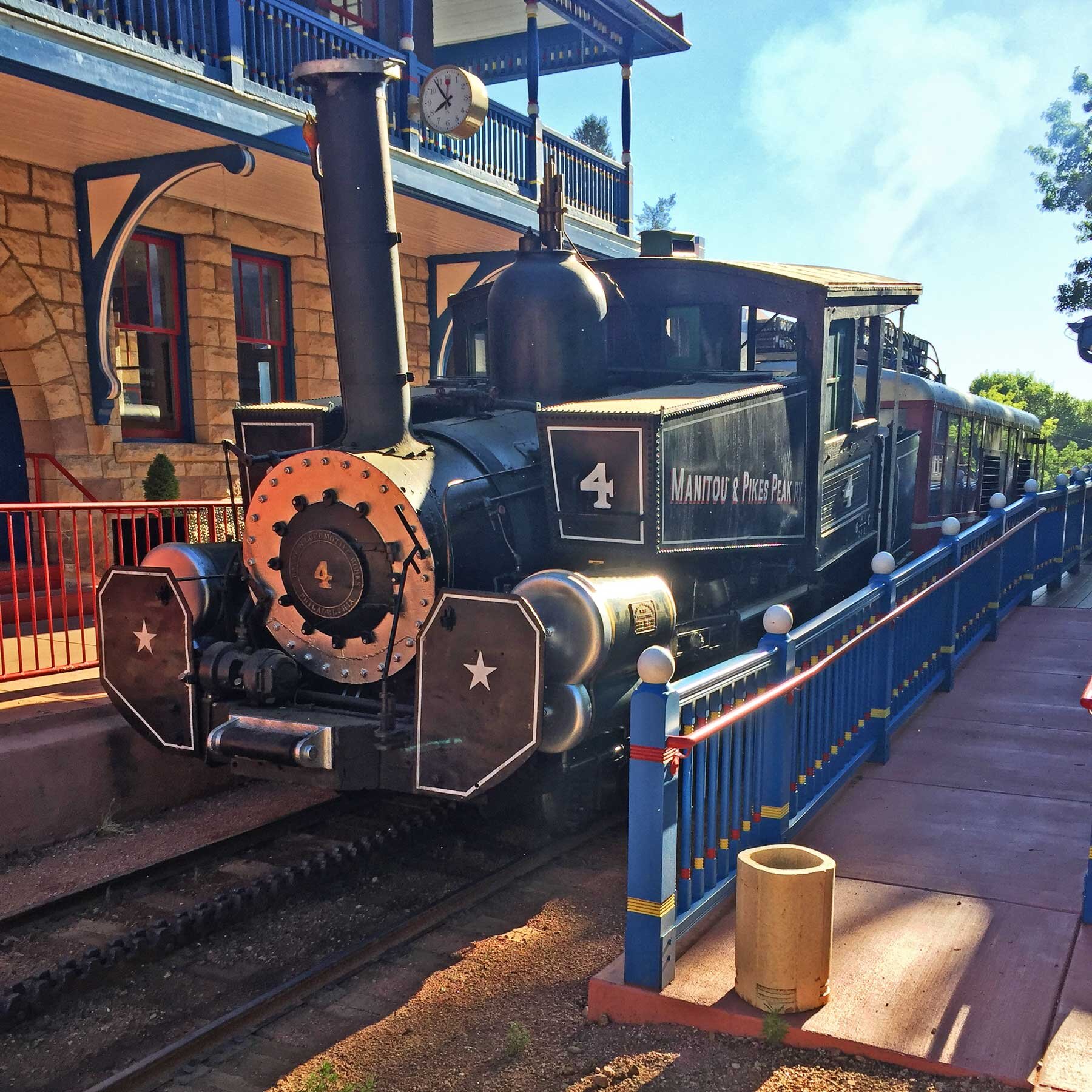
Normal trains can not retain traction on the rails at grades steeper than 10%, so the railway would need to use a cog and rack system to help pull trains up the mountain and control the speed of the descent. The average grade of the line would be 12% but would top out at 25%. The line would start at a depot in the town of Manitou Springs, located at an elevation of 6,320 feet (1,930 m), and climb 8.9 miles (14.3 km) to the summit of Pikes Peak at an elevation of 14,115 feet (4,302 m). It was a miserable two-day trip on a mule and after his return, Simmons was convinced that there needed to be a more "civilized" mode of travel to the summit of Pikes Peak and decided to fund the construction of a railway.

Simmons had designed a wooden telegraph insulator while on the board of directors of Western Union, and was surveying Englemann Canyon for telegraph lines to the top of Pikes Peak.

Simmons, who had founded previously the Simmons Bedding Company. The idea for the railroad came in 1888, after a trip to the summit by inventor Zalmon G. The railway was closed between Octoand May 20, 2021, for a complete refurbishment that saw the replacement of the track infrastructure, the rebuild of older railcars and the purchase of three new trainsets. Originally powered by steam locomotives, the line later switched over to diesel-powered locomotives and self-propelled railcars. Cog railways are common in Switzerland and found in other parts of the world (totaling about 50 lines), but this is one of only three such lines remaining in the United States, the other being the older Mount Washington Cog Railway in New Hampshire, and the short Quincy and Torch Lake Cog Railway. The base station is in Manitou Springs, near Colorado Springs.Ĭonstruction on the line was started in 1889 and the first train reached the summit on June 30, 1891. The Broadmoor Manitou and Pikes Peak Cog Railway (also known as the Pikes Peak Cog Railway) is a cog railway that climbs one of the most iconic mountains in the United States, Pikes Peak in Colorado.


 0 kommentar(er)
0 kommentar(er)
